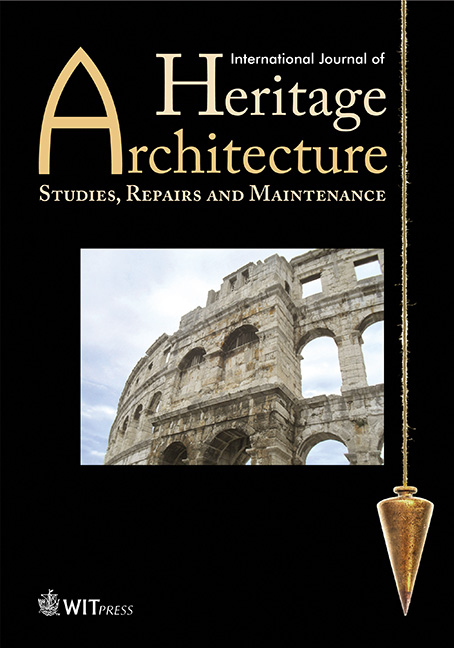ASSESSMENT OF LARGE DEFORMATIONS ON ROMANESQUE MASONRY PILLARS: THE CASE OF SANTA MARÍA DE ARTIES (XII–XIII) AT VALLE DE ARAN, SPAIN
Price
Free (open access)
Volume
Volume 2 (2018), Issue 2
Pages
9
Page Range
314 - 323
Paper DOI
10.2495/HA-V2-N2-314-323
Copyright
WIT Press
Author(s)
JOSEP LLUIS I GINOVART, SERGIO COLL-PLA, AGUSTÍ COSTA-JOVER & MÓNICA LÓPEZ PIQUER
Abstract
A set of Romanesque churches at Vall d’Aran, which were built between 11th and 13th centuries, have suffered great deformations and geometrical displacements. In some cases, these deformations have caused the apparition of convex shapes related to the generatrix of the vaults, which are the inverted shape of an arch. Joints have appeared due to the active and passive thrusts as consequence of the interventions made to keep the structures on equilibrium. The church of Santa Maria d’Arties is probably the church where this deformational process is more remarkable. The geometrical assessment of the least rigid elements, the pillars, allows to analyse the displacements which have caused the anti-funicular shapes on some vaults. It is possible to deduce the regression plane of the displacements of the pillars of the central nave, and to define over it the deformation vectors. Thus, the processing of these data allows determining the directions of the deformations of the vaults. The deformations of the pillars are not perpendicular to the axis of the central vault, so the methodology and results can be very useful to understand the nature of the displacements and to maintain those masonry structures.
Keywords
barrel vaults, great deformations, masonry pillars, Romanesque, Valle de Aran




